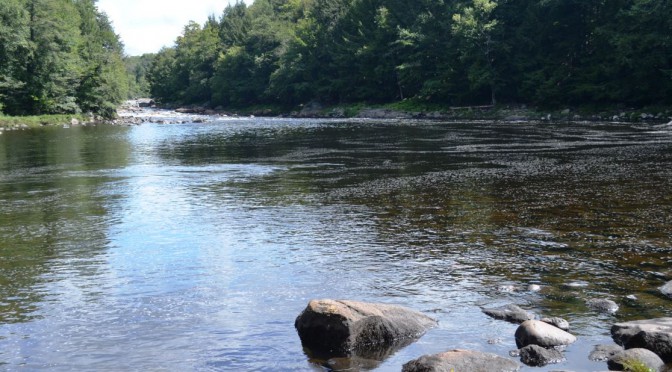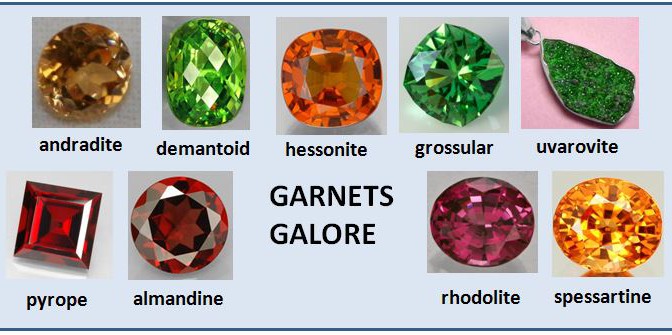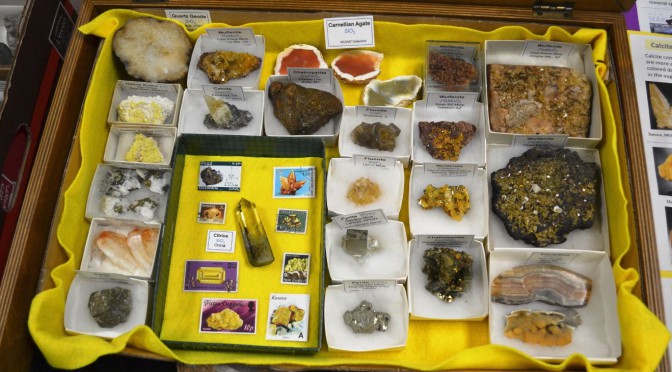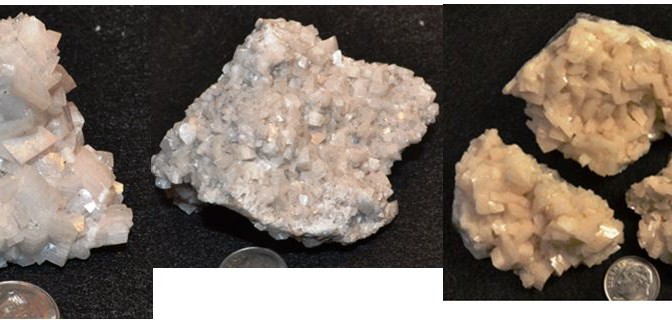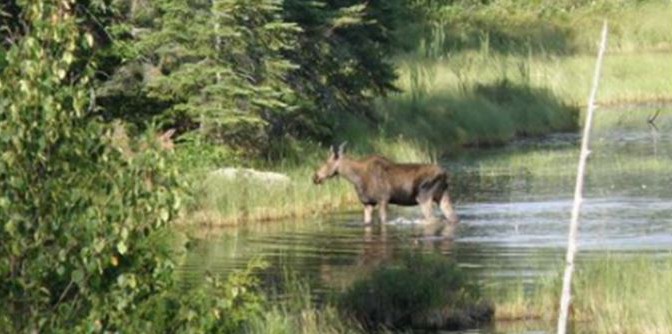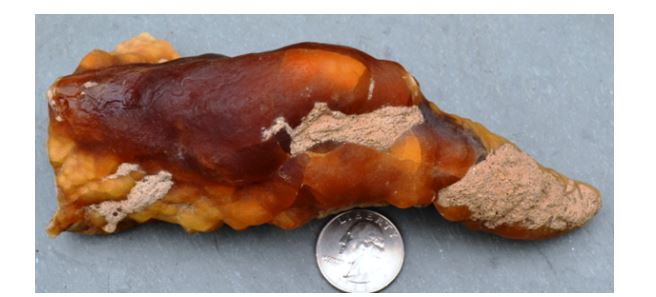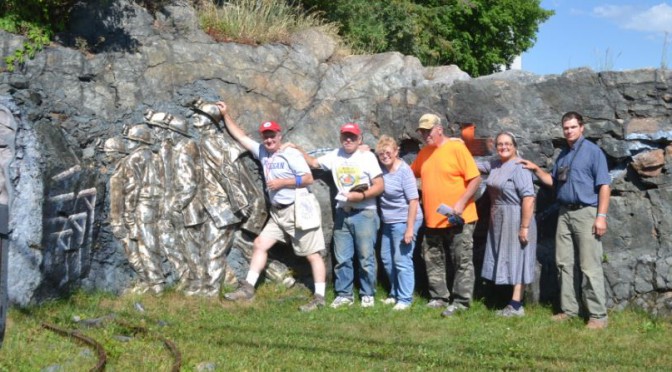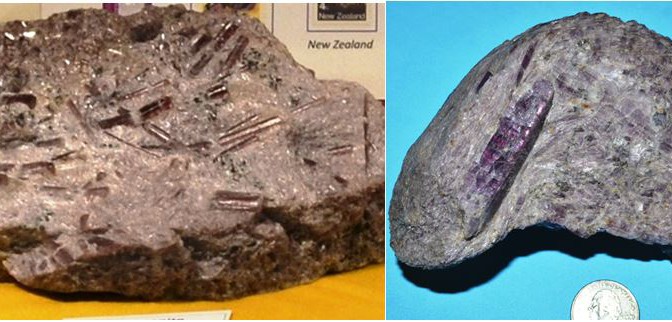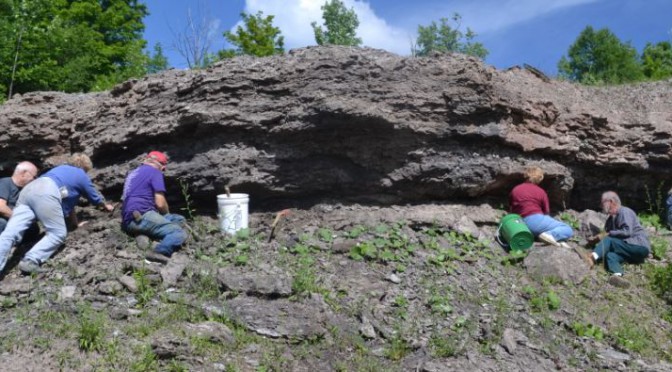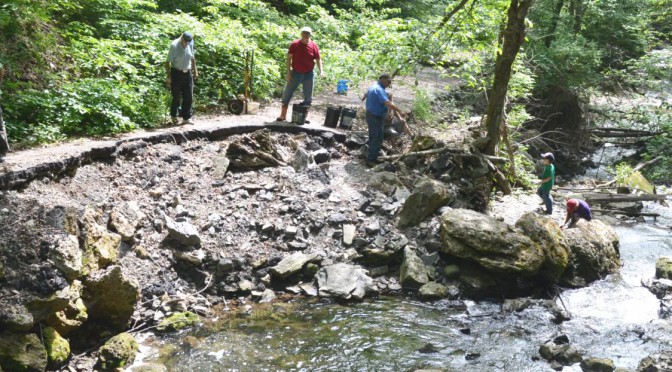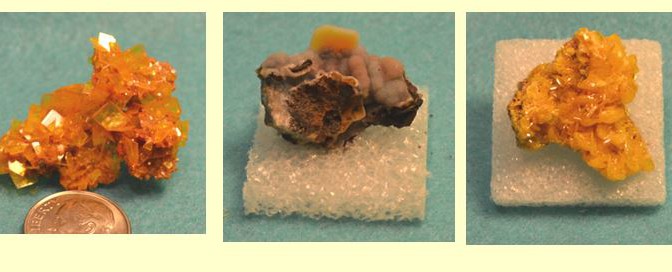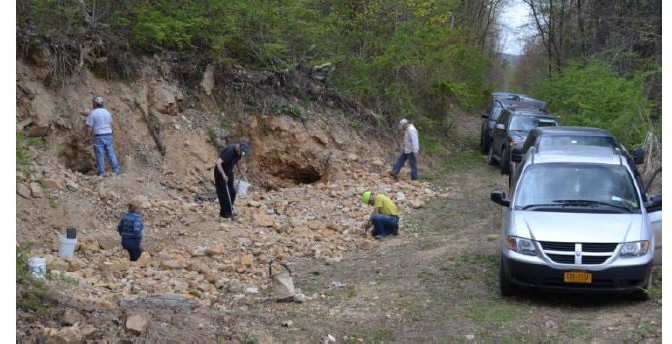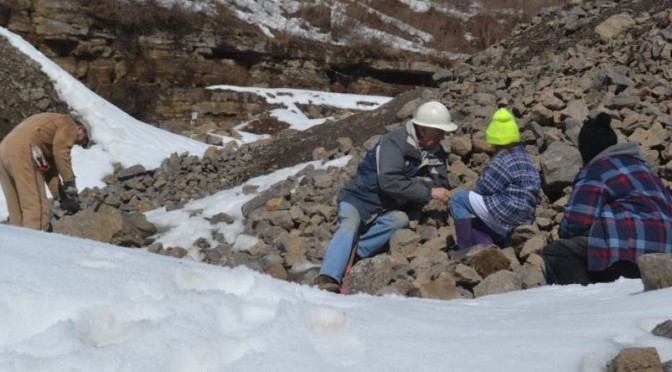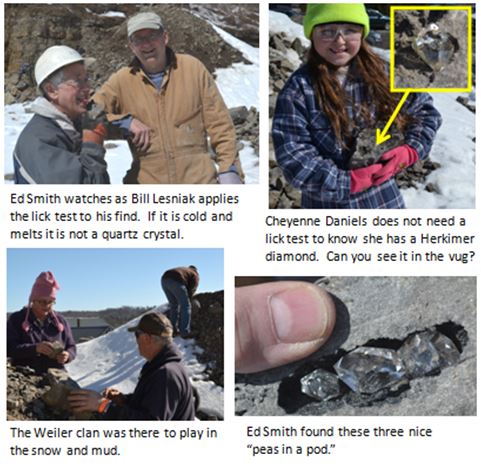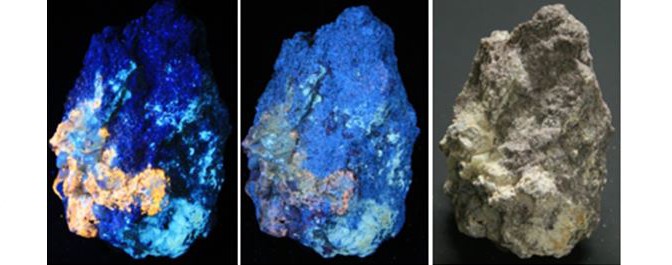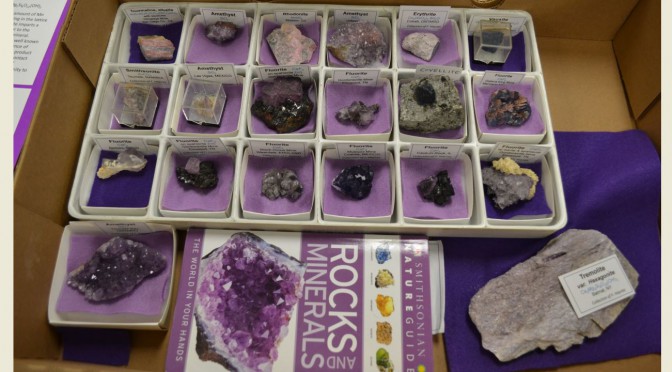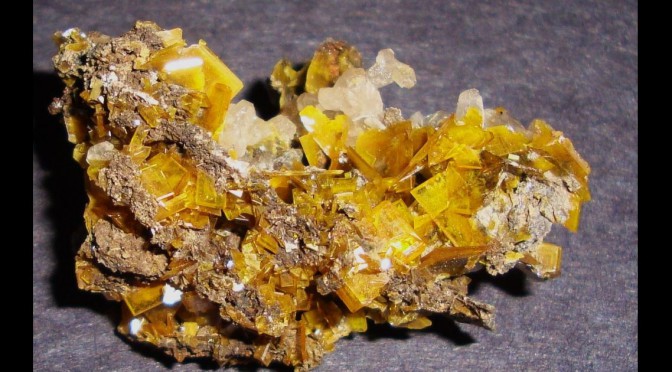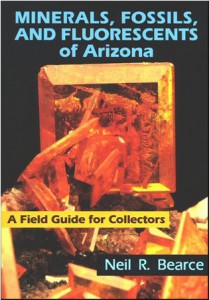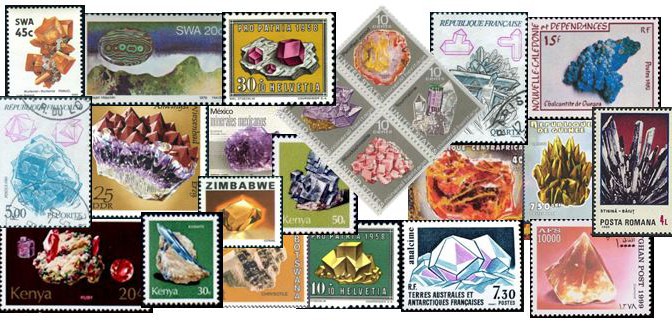Everyone likes the color purple and mineral collectors like shiny crystal surfaces and perfect terminations. Therefore, is it any wonder that amethyst attracts attention? Whether it is spotted in a 2” miniature specimen off matrix, filling a small geode, or covering a huge Brazilian crystal cathedral, eyes are always drawn to the splendor exhibited by a fine amethyst piece. Given its appeal, is it any surprise that amethyst is the February birthstone?
Category Archives: Minerals
Moose River Quartz
When most of us think of quartz in New York State we think of Herkimers. Yes, that is quartz and they are very nice. But last summer WCGMC found another site in the state to collect quartz and get wet at the same time. In September, we searched the shores of the Moose River.
Garnet – January Birthstone
Wayne County Gem and Mineral Club has decided to make 2016 the year of the Birthstone. And isn’t garnet a great way to get started!
Garnets are hard (Moh’s hardness of 6.5-7.5), or as hard or harder than quartz. As members of the isometric crystal system garnets are symmetric with three equal and perpendicular axes. Garnets are colorful: red, yellow, green and many shades of each. And garnet is the birthstone for all born in January.
Yellow Mineral Sunshine
Yellow is the color of sunshine, of brilliant warm summer days. It is the color of bananas, lemon meringue pie and butter pecan ice cream. There are beautiful yellow breasted birds and wondrous yellow flowers. Some cultures view yellow as the color of happiness, amusement, and even optimism.
All that is well and good, but yellow is also the color of wulfenite, sulfur, heliodor and a number of other wondrous minerals and gems. And, of course, it is the color of gold. It was with this appreciation of the color yellow that WCGMC convened in November for a celebration of “Yellow Minerals”.
Dravite: A Variety of Tourmaline
This article was published in the November issue of Wayne County Gem and Mineral Club News. Ninety-one dravites from the WCGMC collection were used to wish the members Happy Halloween.
Dravite is a tourmaline within the Alkali Subgroup 1. This means that the X-site in the complex formula below is predominantly occupied by sodium (Na). In the case of dravite the Y site is occupied by magnesium (Mg) and the Z site is aluminum (Al). The boron cyclosilicate mineral is always dark in color, ranging from chocolate brown to almost jet black. Occasionally, there is sufficient chromium in the Y and/or Z site to impart a dark green color. Dravite is most commonly found in metamorphosed limestones and in higher grade mafic schists.
Dolomite Gets No Respect
In mid-October, over 130 mineral collectors from several northeast states and Canada converged on Walworth Quarry in upstate New York for the annual fluorite hunt. Every May, the same crowd treks to Penfield, NY when The Dolomite Group opens that quarry to folks hoping to score a nice transparent-purple fluorite or maybe some dogtooth calcite. Closer to Buffalo the prized finds are dogtooth calcite, clear selenite, and, of course, small purple fluorites when clubs visit the Lockport Quarry.
Granted the fluorite and other less common vug filling minerals like sphalerite, celestine, and honey colored dogtooth calcite are nice finds and worthy of special attention. But, there is another fine crystalline mineral hiding in the vugs of the Lockport dolostone. Yes, I speak of the carbonate mineral, dolomite, or CaMg(CO3)2 Everyone shines their flashlight into the dark vugs of car-sized boulders hoping to see a flat transparent cubic cornered, multi-inch fluorite gleaming back at them. Absent that observation, collectors move on to the next vug, the next boulder, the next quarry face.
In the next few paragraphs, I am going to try to convince you to take a second look into the vug. Pause a few seconds to evaluate the white to pink dolomite crystals that you are categorically dismissing as unworthy of your collecting attention. Are not most of the vugs lined with clean shiny dolomite crystals? Is there a floater piece in the vug that can be easily removed that displays multiple tiers of brilliantly terminated rhombohedral dolomite? If yes, just why are these not worthy of extraction?
Four days in St. Lawrence County
Prepared and published in the Wayne County Gem and Mineral Club News, October 2015. WCGMC newsletter Oct 2015
Our 14th collecting trip of the year (but who is counting) was, surprisingly, the first official WCGMC venture to St. Lawrence
County in 2016. But what we suffered in tardiness, we made up for in quantity. The trip was four days long and included seven separate collecting sites (one, Rose Road, was visited by members on three separate occasions over the 4 days). Several of us stayed in a rented home on Star Lake, owned by Anita Persson, wife of George Persson, who helped us with the Benson Mines visit during the trip.
The trip was not scheduled to start until Thursday morning September 17th, but Bill Chapman and I had arrived in Star Lake early evening on Wednesday and we decided to take Bill’s black light to Rose Road in Pitcairn for an early start. As always the lower area, known to many as the purple diopside mound (or PDM), lit up bright yellow under long wave with the mineral scapolite and the albite at the “wollastonite skarn” (or green diopside mound) lit up red under short wave.
Canada 2015 (Part 2- Eganville, Ontario)
After 3 nights in Cobalt (see August WCGMC newsletter), we headed to Eganville in search of more collecting adventure.
Although the primary objective of our trek back to the Grenville Province was minerals, our first stop was at a limestone quarry where large cephalopods and coral could be found. The Haley Quarry, 8 miles southeast of Eganville, exposes the Lindsey and Verulam Formations of the Upper Ordovician Ottawa Group which are known for their large cephalopods, some of which are exposed in nearby Bonnecherre caves.
Ilion Gorge Fluorescence
WCGMC News article for September, 2015 – By Ken St. John
My son, Isaac, and I joined the club on the field trip to the Jerusalem Road Gorge in Ilion earlier this year (see July 2015 WCGMC News). In sorting through the material we brought back (yes, we left the deer skeleton) I exposed the rocks and minerals to UV light. I thought that I’d share the pictures.
Cobalt Silver District, Ontario
During the third week in July, seven WCGMC members spent 7 days and 6 nights collecting in Ontario. The first three days in Cobalt, Ontario are summarized here. Part 2, three days near Eganville, will be reviewed in a subsequent entry. Modified from August, 2015 WCGMC newsletter article.
From its discovery in 1903 until around 1920, Cobalt, Ontario was a hotbed of silver mining and the center of Ontario’s economic mining industry as over 10,000 inhabitants opened more than 100 mines in search of silver. Over 100 years later, and for 2 days in July, 2015, seven eager rockhounds from WCGMC followed in the old timers footsteps.

Balmat Hexagonite
In the July issue of WCGMC News, one of the club’s long time members offers his memories of a favorite site and a favorite mineral. Ken Rowe, and his wife Rocky, have been club members for over 30 years.
This is a brief reminiscence about my collecting at the Gouverneur Talc Mine and the Zinc Corporation of America Mine in Balmat, New York in the late 1980’s. We began about 1980, when my wife and I were fairly new members of the WCGM Club. We were guided by Jim and Marion Wheaton, the founding members of WCGMC. At that time the Balmat site was an underground mine for zinc.
Just before our visit to the Gouverneur Talc Mine a cave-in had led to a partial collapse to highway 812 and repairs to the road required just about all the available tailings to fill in the damage to the road. Upon arrival at the mine we were very disappointed because we were expecting some good specimens of hexagonite. All we found were a few forgotten boulders around the perimeter of the site, so we (about 10-12 persons) made the best of it. Can you imagine all the hexagonite buried now beneath the road! Continue reading Balmat Hexagonite
Silurian Selenite near Syracuse
Published in the July, 2015 WCGMC News
In late June, seven of us mineral enthusiasts set out for a day of collecting near Syracuse. We concluded the trip with a successful stop in Fayetteville where we recovered selenite. The site is behind the town municipal building on Route 257. The small outcrop is not a stand alone destination, but it does makes a nice ancillary stop on a trip into the area. For us, that meant a 90 minute stop after spending several hours in Ilion Gorge (our second visit there in a month). The Fayetteville ledge is not as pretty as the Ilion location, but it was a productive stop. Continue reading Silurian Selenite near Syracuse
Ilion Gorge Revisited
One of my favorite upstate New York sites for a few hours of collecting is Ilion Gorge on Jerusalem Road in Herkimer County, NY. Each winter erosion in the gorge exposes new banded travertine that can be collected in the creek or chiseled from the boulders that have fallen off the gorge walls. The site is pretty with short waterfalls and lots of green. When the Wayne County Gem and Mineral Club decided to visit the site on May 39th, I was there with 10 other club members. We were ready for a day of collecting and camaraderie.
Wulfenite !
Note written for the June 2015 WCGMC News
Mineral collecting can be both stimulating and reflective. Does your mineral collection bring back fond memories of trips and times past? Does it re-invigorate you each time you re-organize, recatalog or otherwise peruse your collection? I am often brought back to earlier periods and places in my life just by the simple act of focusing on a self-collected piece in my collection or by seeing a mineral specimen I had not viewed in a long time. Last month I opened a box of Arizona wulfenite in the garage that had been securely wrapped in 30 year old tissue and newspaper and it was deja vu all over again. It was like I was in the Total Wreck Mine in the Empire Mountains of Arizona all over again.
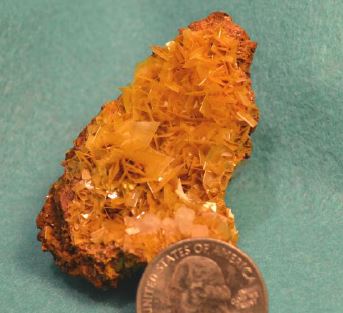
A Trip to Pennsylvania
Pennsylvania and the Limestone Products Quarries in Mt. Pleasant Mills and Middlebury beckoned a number of Wayne County Gem and Mineral Club collectors south for May Day. The day started with the annual dig atop the quarry collecting wavellite. As the cover photo suggests, we dug high, low, left, and right in the third cut atop the hill, but unfortunately we were not as successful as in past years. Lots of color but not many full balls and none of the deep green the Buffalo Club had on display at its show in March. We probably did not dig deeply enough to deserve quality pieces. But, yes, that is Jerry Donahue in the middle of the photo with his sampling tool. It was great to see him back in the field with us.
Field Season Has Arrived
Spring has arrived and Wayne County Gem and Mineral Club did not let any grass grow under its feet before activating its field season. In fact, we did not even let the snow melt.
It was April, it was opening day, and there were diamonds involved. But no, it was not baseball. Rather, April 1 is opening day for “Herkimer diamond” hunting at Ace of Diamonds Mine in Middleville, NY and 12 intrepid WCGMC members put on their boots and their woolies and made the annual trip. Exposure was limited and the snow prevented the owners from bringing in new rock. But there were still “diamonds” to be found and the sun was out to warm our hearts if not our hands. April 1 may actually be more tolerable than August 1. We even signed up a new member while digging, welcoming Donna Dow to our growing family of crazed collectors.
Rose Road Fluorescent Minerals
Another very interesting guest article for the April 2015 WCGMC newsletter. Ken St. John has graciously permitted me to place his note onto my website. Clearly, the information contained here complements that I had previously posted about this most interesting location.
By Ken. St. John (WCGMC Club member)
To be honest, I can’t remember when I made my first trip to the Rose Rd. site in Pitcairn. It was a few years ago and Bill Chapman was involved in the introduction to the site. My first visit was a daytime affair with the Wayne County club in search of titanite. I do recall that titanite was something new to me at the time and that I was excited to be there with the club and my kids.
The site is a wooded outcrop beside a phone tower road. No problem at all in getting to the place. There are essentially two parts to the site up and downhill and during the first visit we pretty much worked the downhill location. My nicest pieces contained wollastonite, titanite, apatite, albite and diopside. The titanite is a dark brownish color while the diopside is a rather coarse light purple massive mineral. Mixed with green apatite and white wollastonite specimens were both interesting and attractive.
It was much later when doing a routine sweep of my collection with a short wave UV light that I discovered that the Rose Rd. rocks were more interesting under the UV light than they were in daylight. It’s not unusual to see a three color response with wollastonite fluorescing a light tan, albite a cherry red, and an invisible coating glowing a bright green. As a member of the Fluorescent Mineral Society and a Franklin collector, I was impressed. So were the other FMS members to whom I showed the pieces at the annual meeting. From then on, I collect at Rose Rd. with an eye toward the fluorescent.
Purple Mineral Night at WCGMC
Written for the April 2015 WCGMC newsletter
Since the days of the Roman Empire, purple has been the color of royalty. As a combination of red and blue, purple is not a spectral color and therefore lacks a defining spectral wavelength. However, that has not prevented people from claiming purple to be their absolutely favorite color. Women build their wardrobes around their purple dresses, folks paint their bedrooms purple, gardeners plan their seasonal blooms from tulips to irises to petunias, and yes mineral collectors must have plenty of purple in their displays. Fortunately they have some wonderfully gorgeous minerals from which to choose.
March 13th was Purple Mineral Night for the Wayne County Club. Members brought in their purple minerals and we all drooled over them. Naturally there was lots of amethyst in attendance. Simple clear quartz (SiO2) is colored to various shades of purple when small amounts (< 20 ppm) of iron (Fe) replace Si when the quartz is naturally exposed to ionizing irradiation. The smaller iron atom leads to lattice distortions that effect light passage imparting the color variation. With a hardness of 7, amethyst makes a wonderful gemstone as well as a colorful mineral specimen.
PbMoO4 is LOVE
Wouldn’t you agree, Valentine’s Day seems like the appropriate day to place a post simply entitled “PbMoO4 is Love” ? Or so was the expression in Arizona in the 1980’s when my graduate student colleagues and I would tramp about the state looking for that elusive wulfenite specimen at some 30 odd locations known to offer the brilliantly colored spectacular mineral. Heck my 1970-something Ford Falcon collecting wagon even hosted a bright bumper sticker that simply read “PbMoO4 is Love “. That car saw them all. There were, of course the famous locations: the Red Cloud Mine in Yuma, the Silver Bill Mine in Gleeson, the Rawley Mine in Theba, the Glove Mine in the Patagonia Mountains. But there were also the not so famous mines and where panes of wulfenite could be coaxed from adit walls or broken out from dump material. My favorites were the Total Wreck Mine in the Empire Mountains (see cover photo), the Finch Mine in Gila County, and the Dogwater Mine in Araviapa but that list too is long.
It is not hard to understand why Neil Bearce decided to adorn the cover of his 2006 book “Minerals, Fossils, and Fluorescents of Arizona” with a gorgeous Rawley Mine wulfenite.
But those days have passed for me, and now I must be content with seeking new locality wulfenite pieces from mineral shows (or on stamps!). There just aren’t many wulfenite locations in the northeast USA and in eastern Canada.
Another way to collect minerals
Published in the March, 2015 newsletter of the Wayne County Gem and Mineral Club (www.wcgmc.org)
It is the middle of February in upstate New York and the weather outside is not particularly conducive to mineral and fossil digs. Yes, I can plan, and I am. Yes, I can clean and organize last year’s bounty, and I try to make time for that, but even the rocks in the garden remain covered and out of reach. BUT, there is another way to collect minerals in the winter and I keep busy doing just that when the spirit moves. They can be collected on postage stamps.
Did you know that there is an international organization of folks who collect gems and minerals on postage stamps? They call themselves the Gems, Minerals and Jewelry Study Unit (GMJSU) and they are one of 52 active affiliate organizations of the American Topical Association (ATA), a philatelic organization with almost 3000 thematic stamp collectors worldwide. The GMJSU publishes a quarterly newsletter called Philagems International and maintains an Excel spreadsheet listing all stamps depicting minerals, gems, and mining. At last count there are over 2700 individual listings although many reflect sets of stamps so the list of actual stamps is larger. Of those listings, over 1500 are identified as strictly mineral stamps and over 400 as gem stamps. Over 90 countries are represented on the list.

